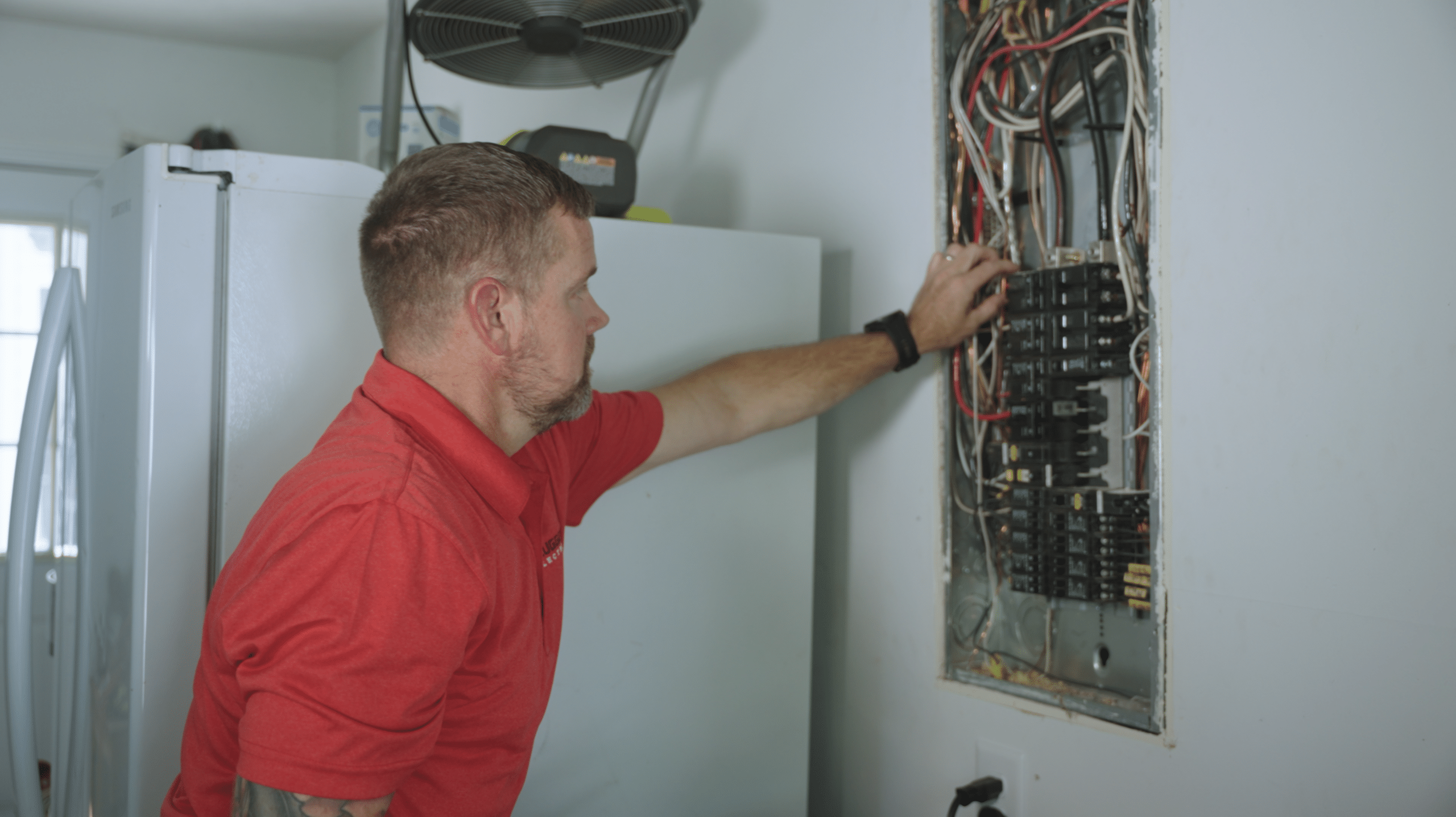Form submitted successfully. We will get back to you as soon as possible.
How to Replace a Circuit Breaker: A Guide to Safety and Reliability
Is your electrical panel causing issues, or are you experiencing frequent power trips? If so, it may be time to consider when to replace a circuit breaker. A faulty circuit breaker can lead to inconvenience and, more importantly, safety hazards within your home. Fortunately, Plugged In Electrical is here to help. As Atlanta’s go-to source for electrical expertise, we specialize in identifying, replacing, and maintaining circuit breakers and electrical panels, keeping your home safe and your power reliable. When you’re unsure of the next step, our professional team is ready to step in and handle everything from inspection to installation so you can focus on what matters most.
When to Replace a Circuit Breaker
A circuit breaker should be replaced if it consistently trips without an apparent overload, emits a burning smell, or appears damaged or melted. These signs indicate that the breaker may no longer effectively protect your home from electrical overloads. Outdated or faulty circuit breakers can lead to electrical fires, appliance damage, and even injuries. To ensure your home is safe and energy-efficient, you must understand the signs of deterioration and act promptly.
When you’re ready for circuit breaker installation, following a few safety precautions is crucial. Additionally, you can contact professionals like Plugged In Electrical to guarantee safe, seamless installation without the stress.
Steps to Replace a Circuit Breaker
Replacing a circuit breaker may sound challenging, but it can be manageable with the right tools and some guidance. Here’s a general guide:
- Turn Off the Power: First and foremost, ensure that the main power switch in the electrical panel is off. This step is crucial to avoid electrical shocks while working.
- Remove the Panel Cover: When power is off, carefully remove the panel cover to access the circuit breakers. This step should be handled with care, as there may still be live wires within the electrical panel.
- Identify the Faulty Breaker: Locate the breaker that needs replacement. Generally, it’s in the “off” position or looks visibly damaged.
- Disconnect the Wires: Loosen the screws connecting the wires to the faulty breaker, then safely remove it from the panel.
- Install the New Breaker: Insert the new breaker into the same slot, securing the wires to the appropriate terminals. Follow the manufacturer’s guidelines to ensure a correct and secure installation.
- Test the Breaker: Once everything is in place, restore power and test the breaker by turning it on to ensure it functions properly.
While these steps can guide you through replacing a breaker, working within an electrical panel always poses safety risks. When in doubt, it’s best to contact a professional like Plugged In Electrical, which specializes in circuit breaker installation and provides expert guidance for maintaining your home’s electrical systems.
Why Choose Plugged In Electrical Services?
At Plugged In Electrical Services, we prioritize safety, reliability, and excellent service, providing Atlanta residents with top-notch electrical solutions. Our team is trained to handle everything from simple installations to comprehensive electrical upgrades, ensuring that each job is done efficiently and to the highest standards. If you’re uncertain when to replace a circuit breaker or need a complete electrical panel upgrade, Plugged In Electrical has the expertise to guide you safely and smoothly.
Ready to get Plugged In? Contact our team today for reliable, professional service that keeps your home safe and powered up!
